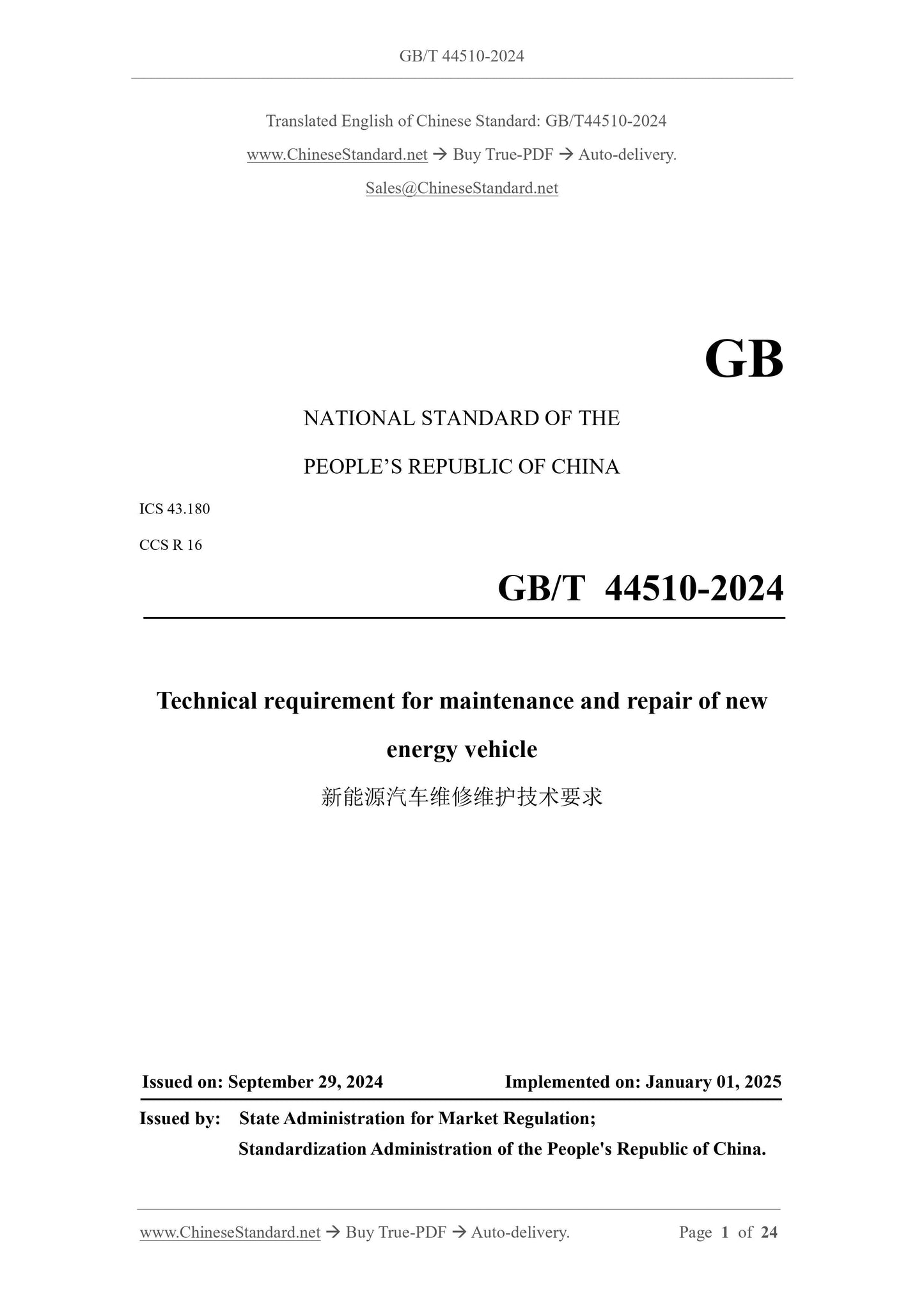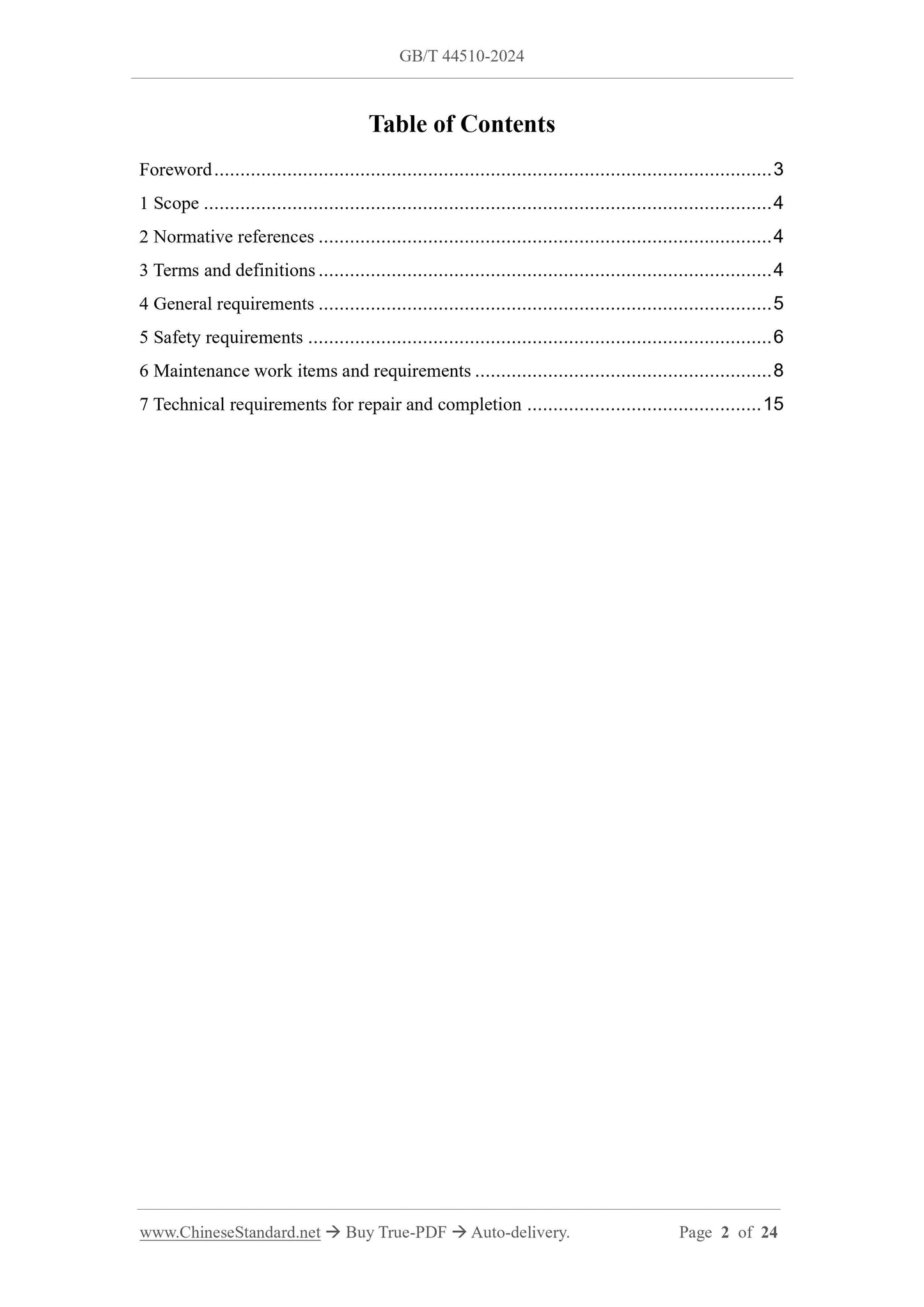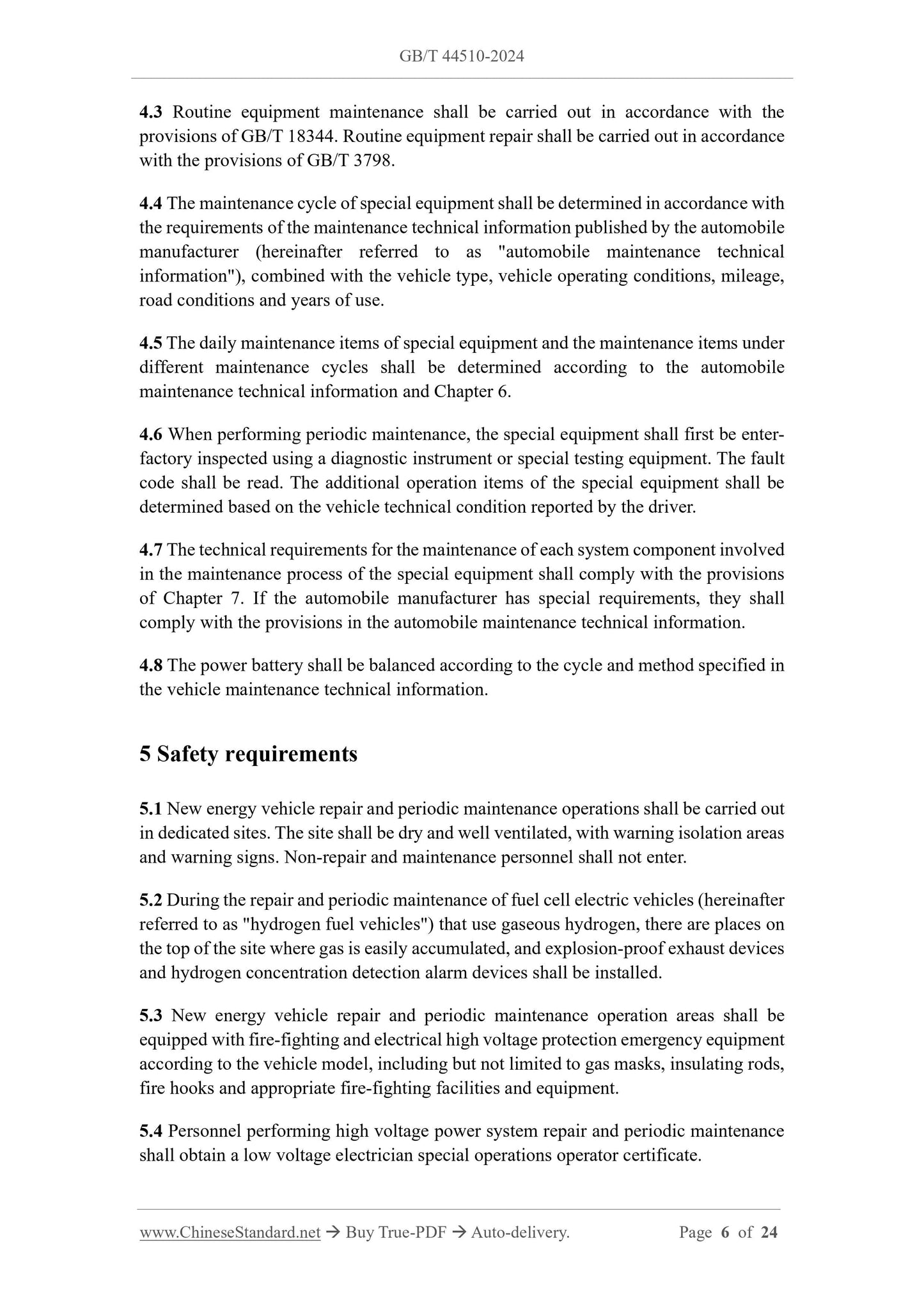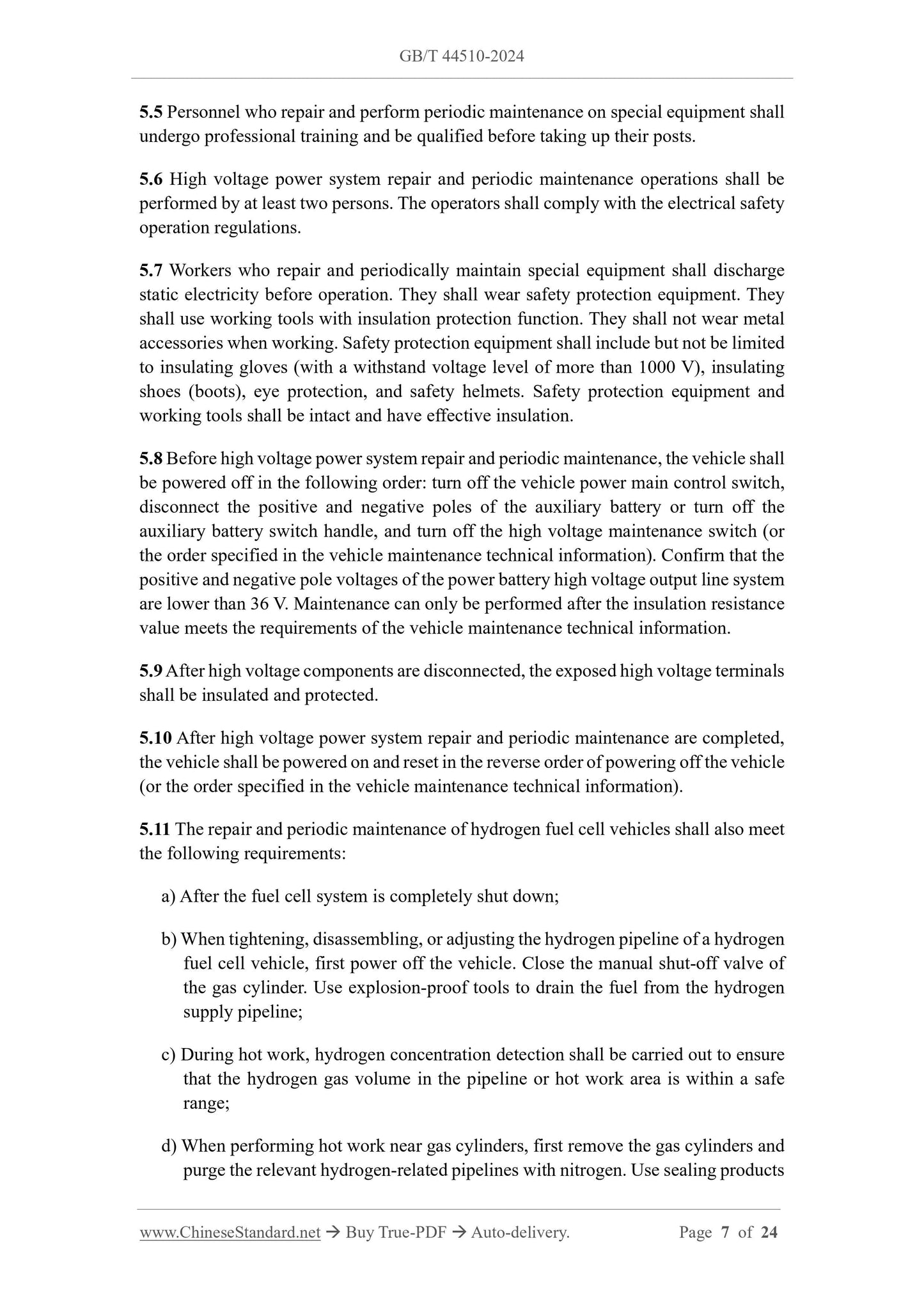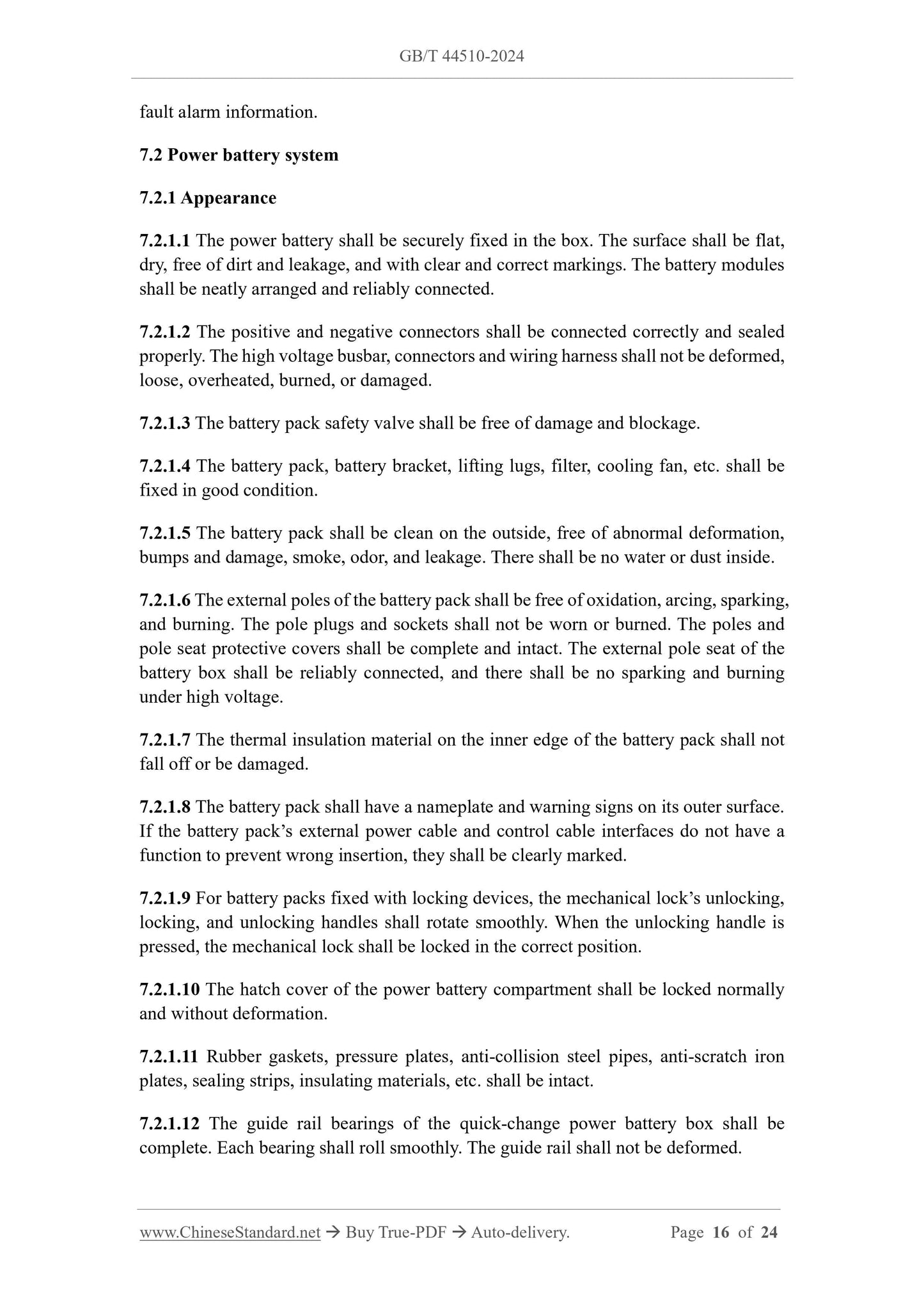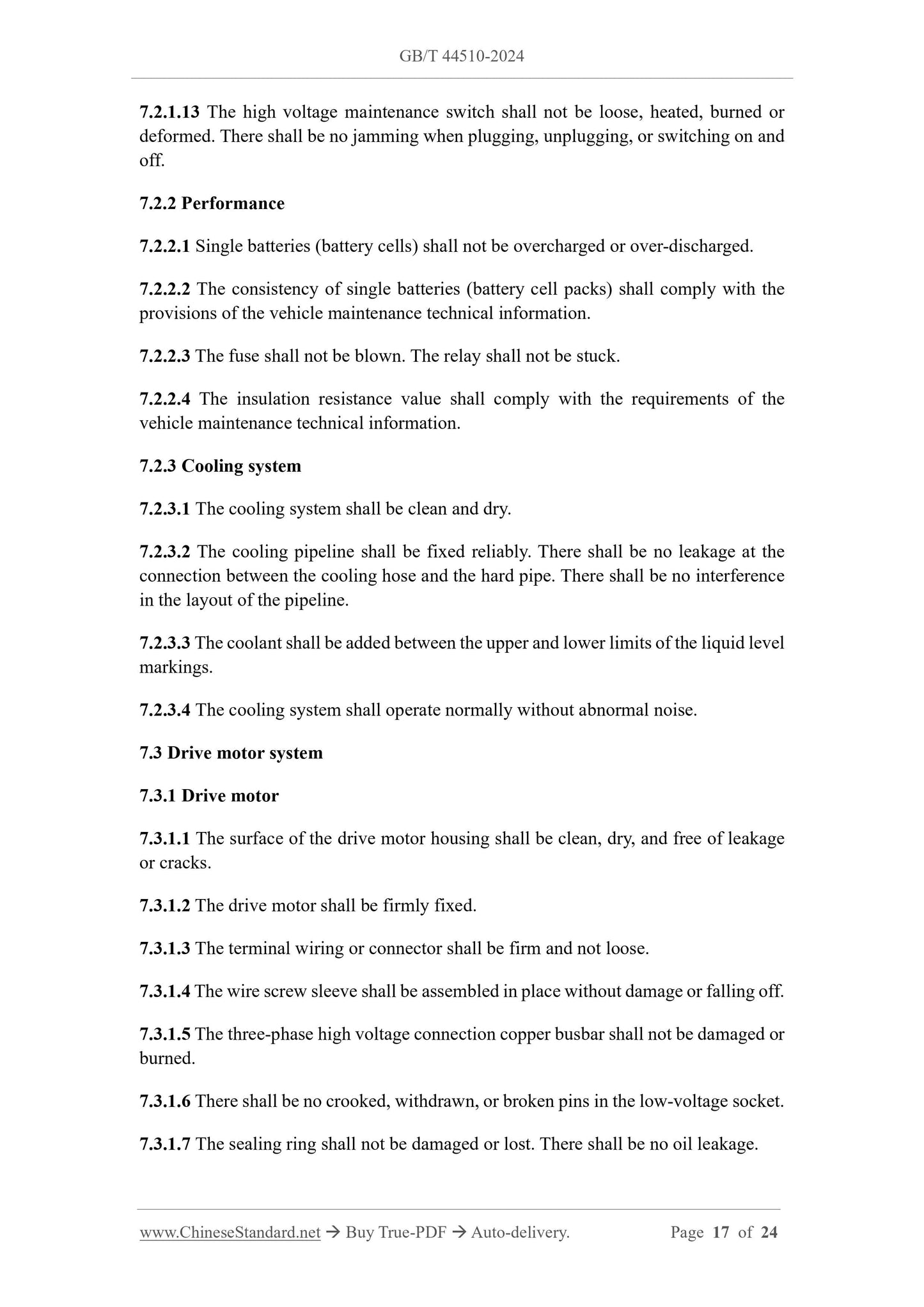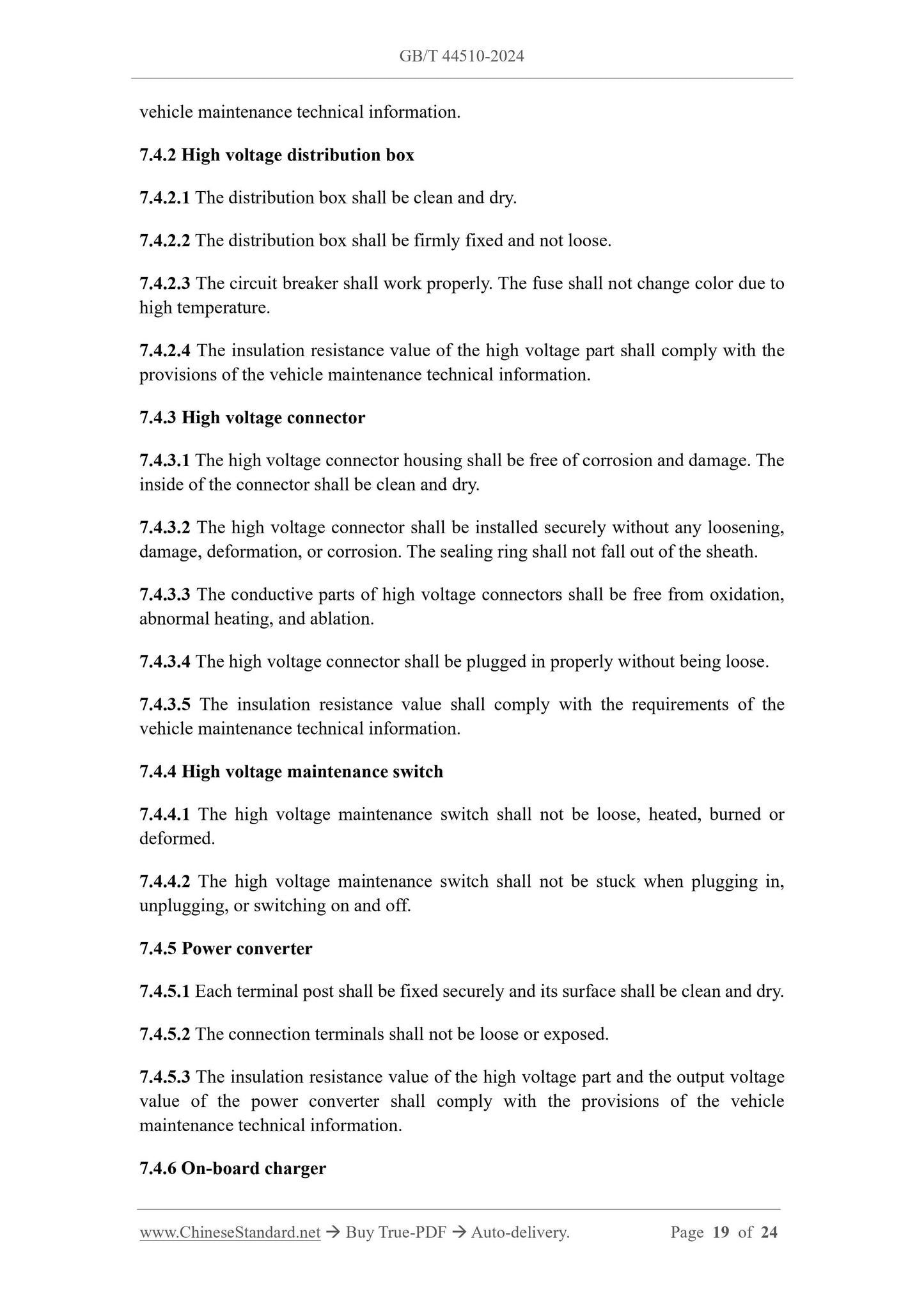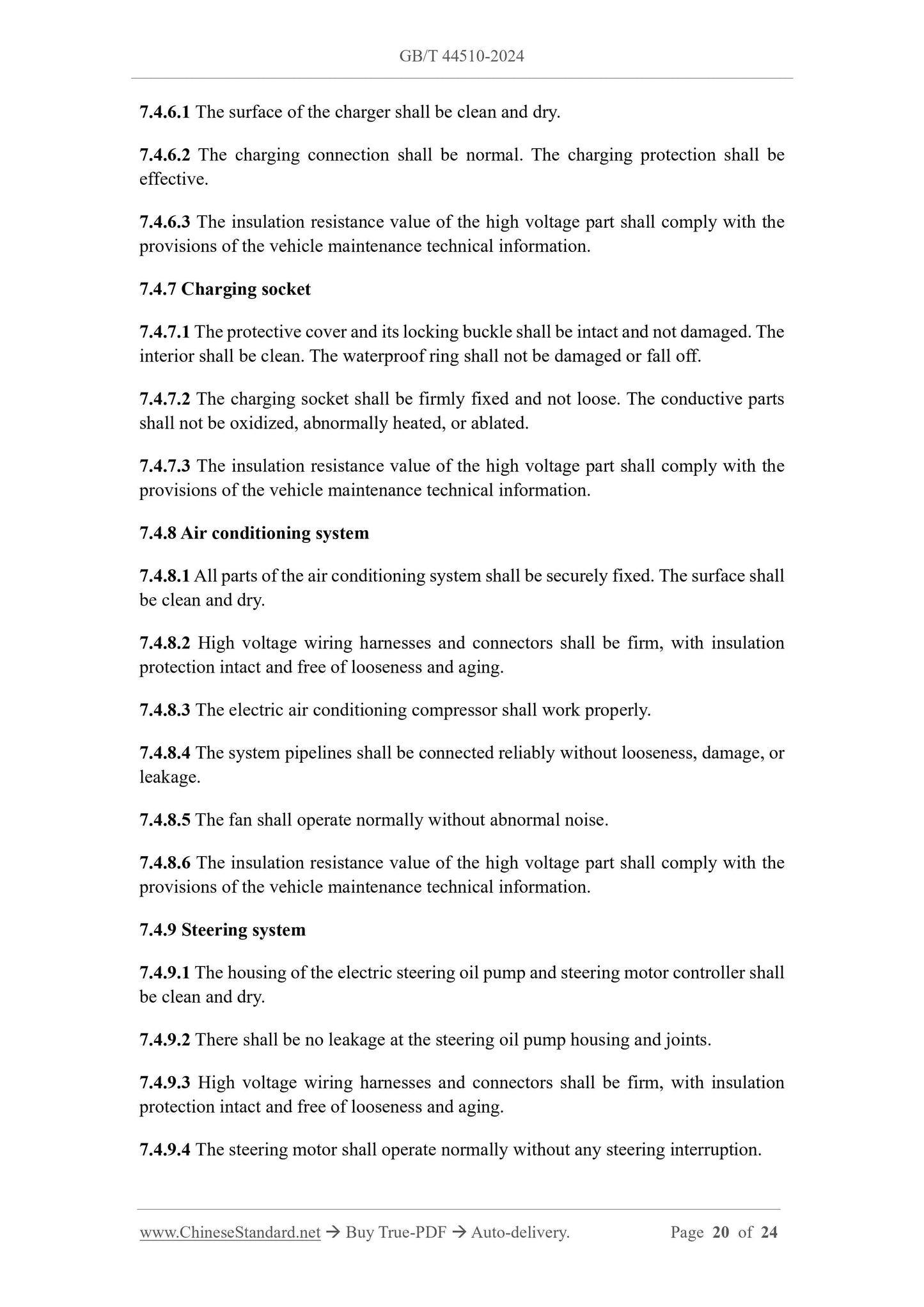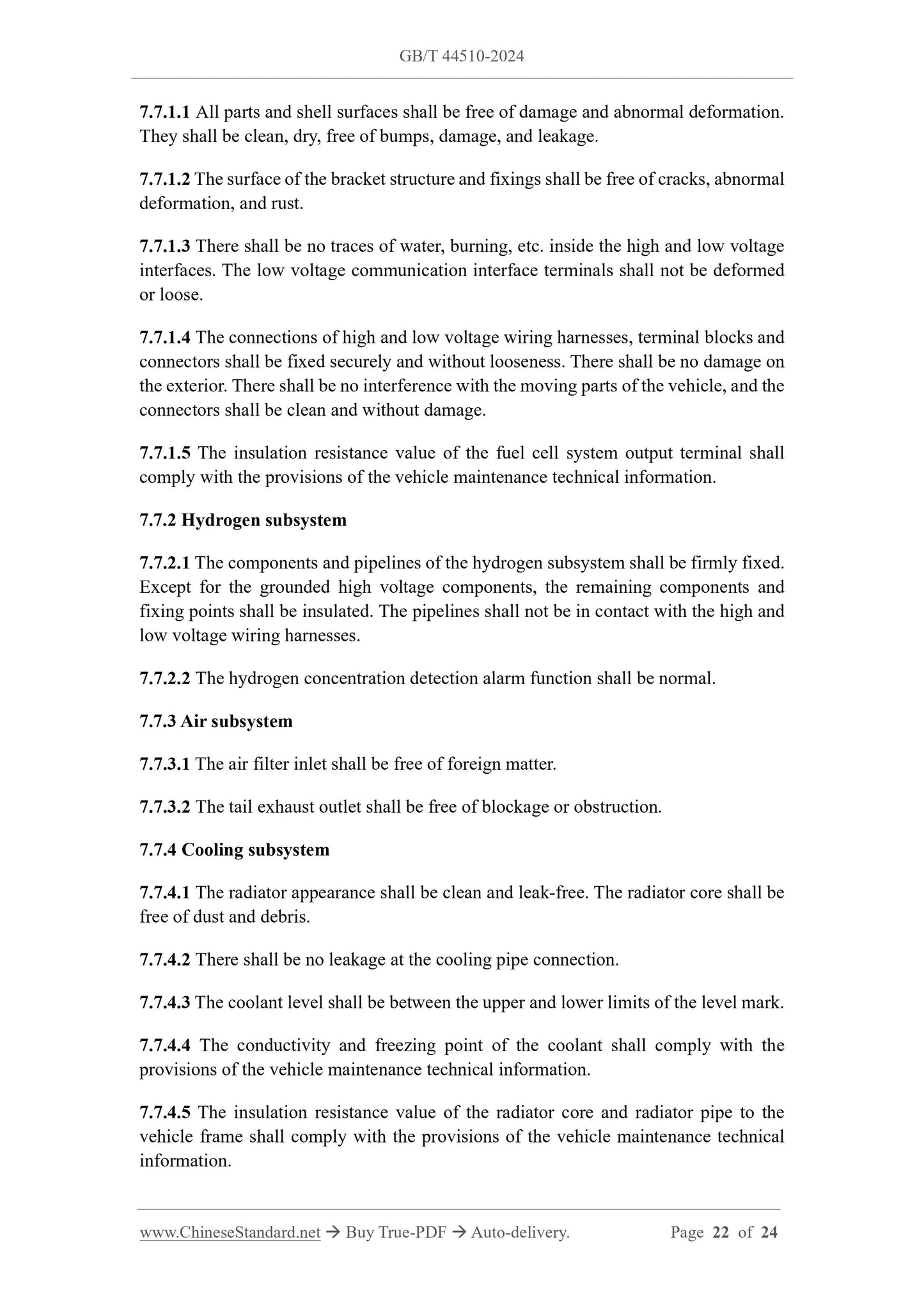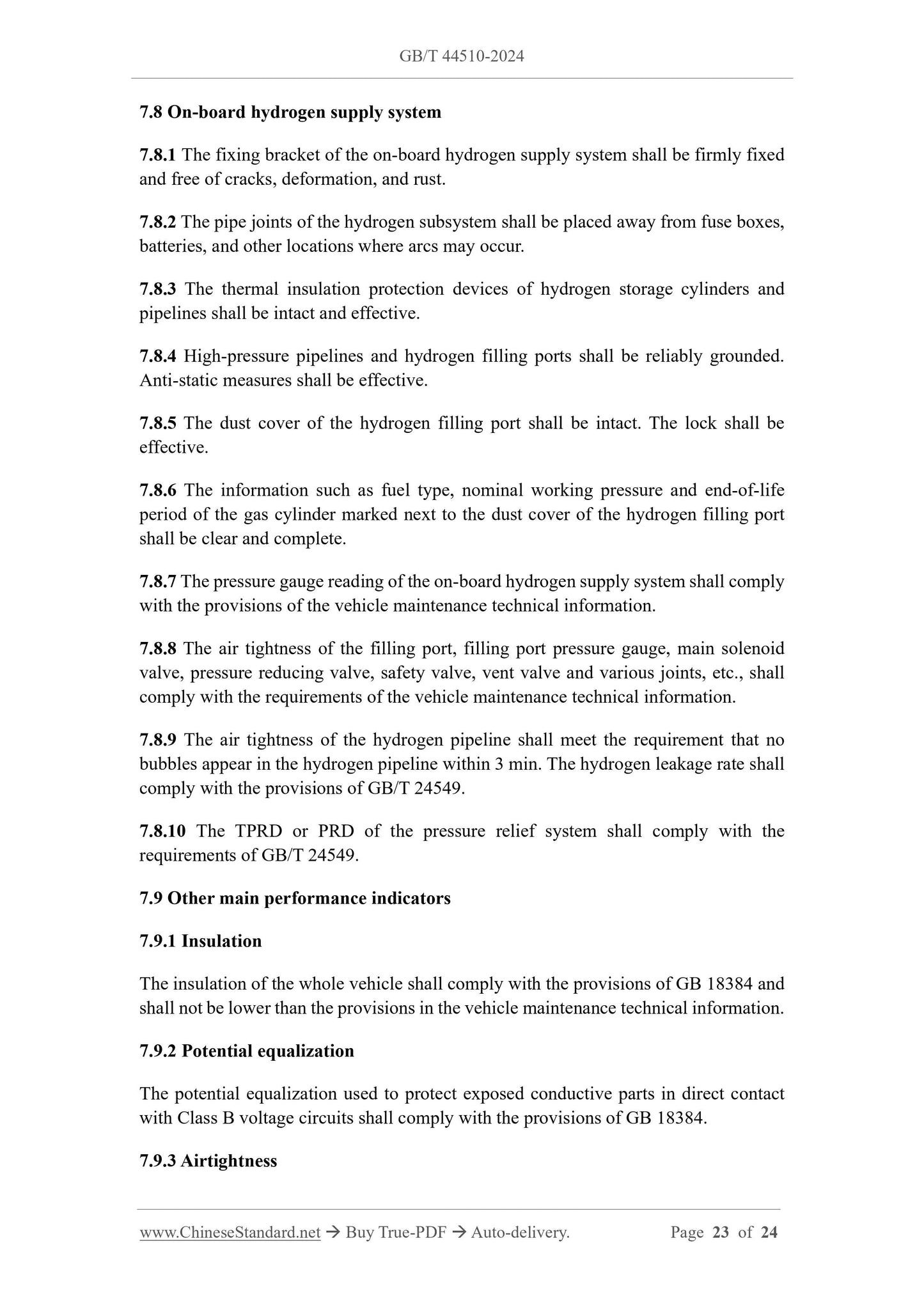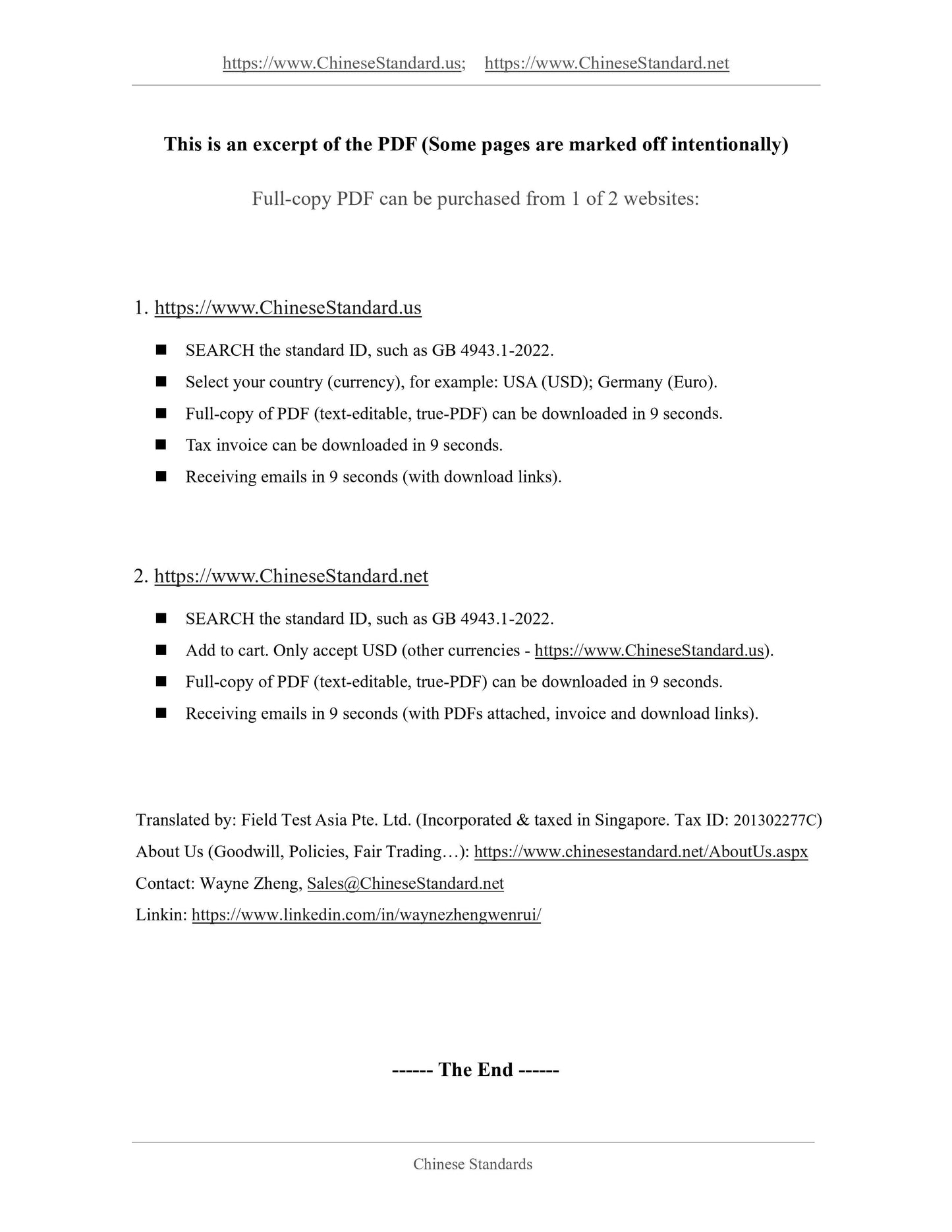1
/
of
12
www.ChineseStandard.us -- Field Test Asia Pte. Ltd.
GB/T 44510-2024 English PDF (GB/T44510-2024)
GB/T 44510-2024 English PDF (GB/T44510-2024)
Regular price
$320.00
Regular price
Sale price
$320.00
Unit price
/
per
Shipping calculated at checkout.
Couldn't load pickup availability
GB/T 44510-2024: Technical requirement for maintenance and repair of new energy vehicle
Delivery: 9 seconds. Download (and Email) true-PDF + Invoice.Get Quotation: Click GB/T 44510-2024 (Self-service in 1-minute)
Newer / historical versions: GB/T 44510-2024
Preview True-PDF
Scope
This document specifies the general requirements, safety requirements, maintenancework items and requirements, as well as repair and completion technical requirements
for maintenance and repair of new energy vehicle.
This document is applicable to the repair and maintenance of pure electric vehicles,
plug-in hybrid electric vehicles, and fuel cell electric vehicles using gaseous hydrogen.
Other types of new energy vehicles shall follow the same procedures.
Basic Data
| Standard ID | GB/T 44510-2024 (GB/T44510-2024) |
| Description (Translated English) | Technical requirement for maintenance and repair of new energy vehicle |
| Sector / Industry | National Standard (Recommended) |
| Classification of Chinese Standard | R16 |
| Classification of International Standard | 43.180 |
| Word Count Estimation | 18,140 |
| Date of Issue | 2024-09-29 |
| Date of Implementation | 2025-01-01 |
| Issuing agency(ies) | State Administration for Market Regulation, China National Standardization Administration |
Share
